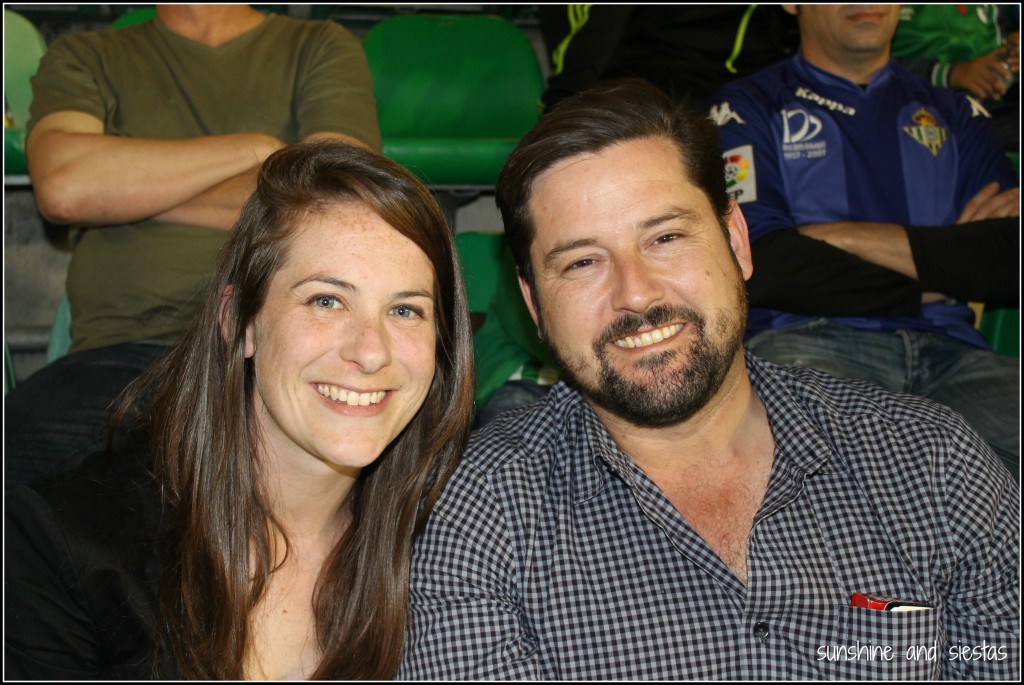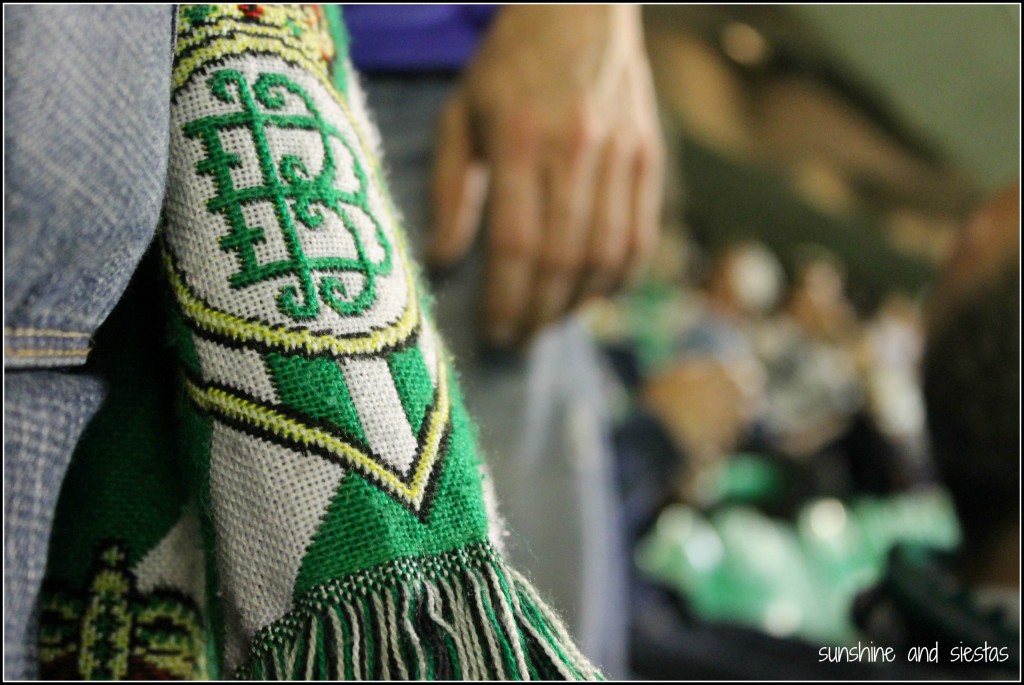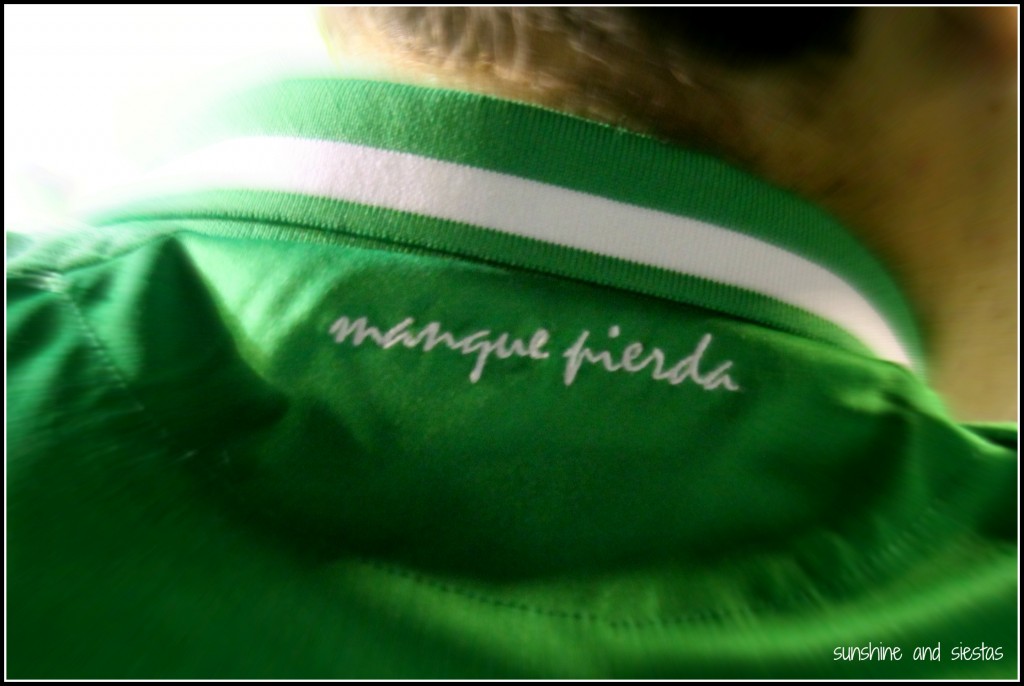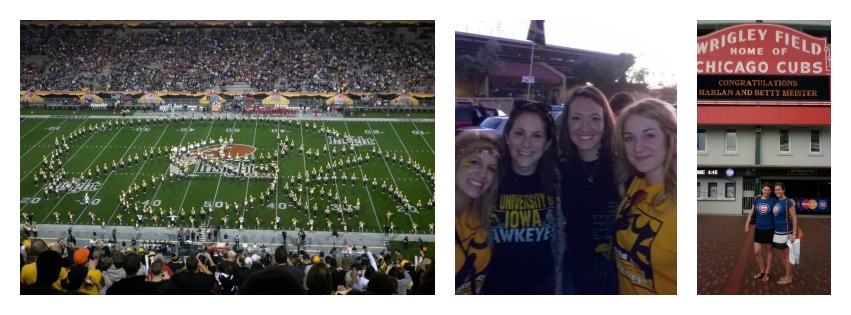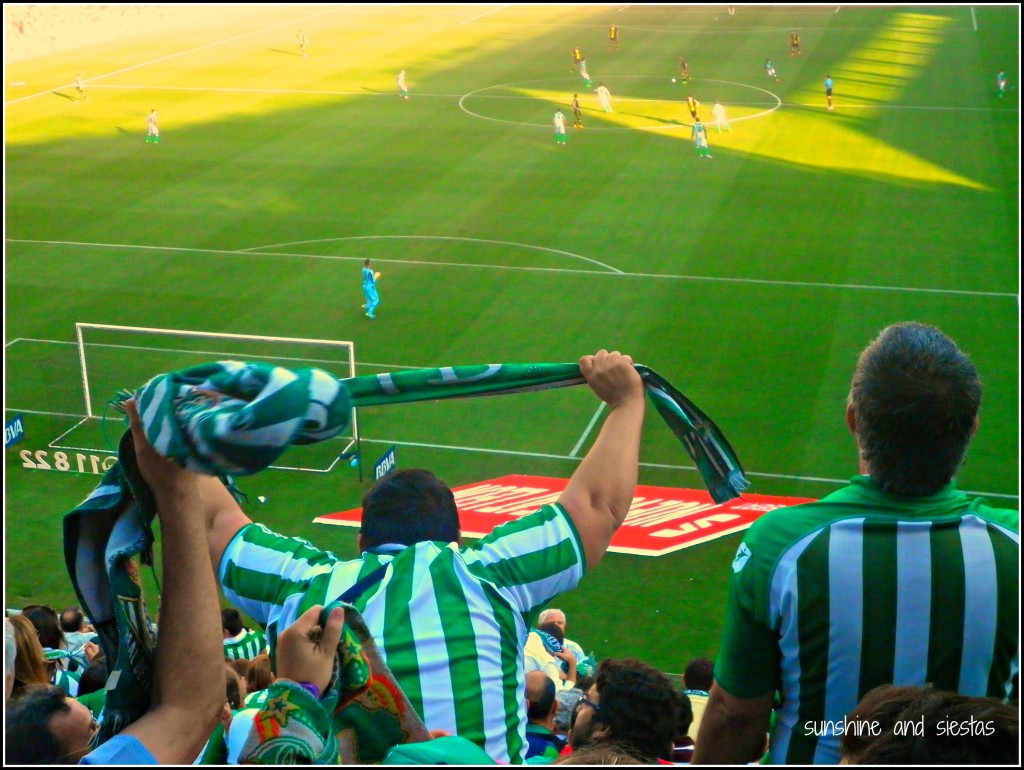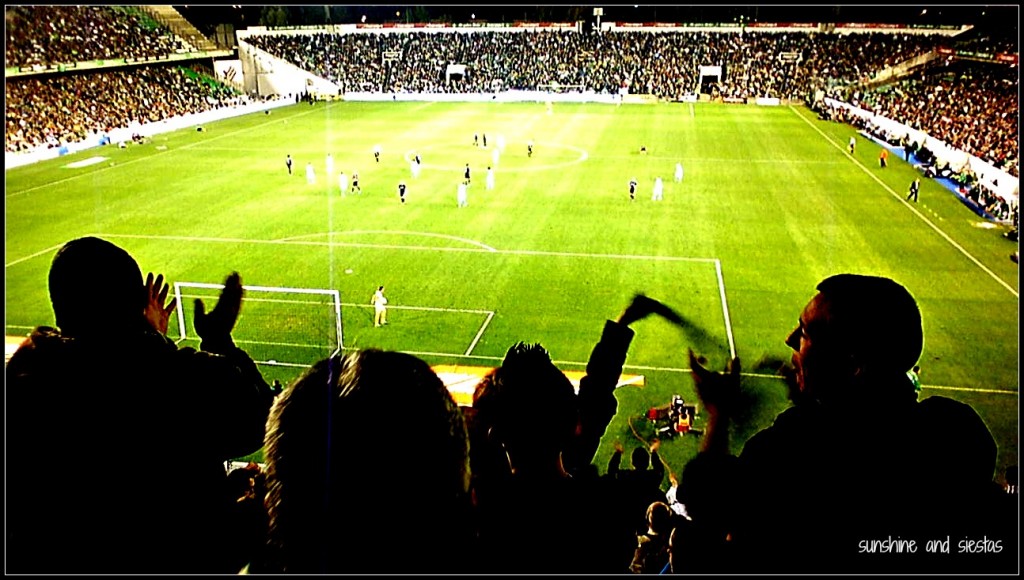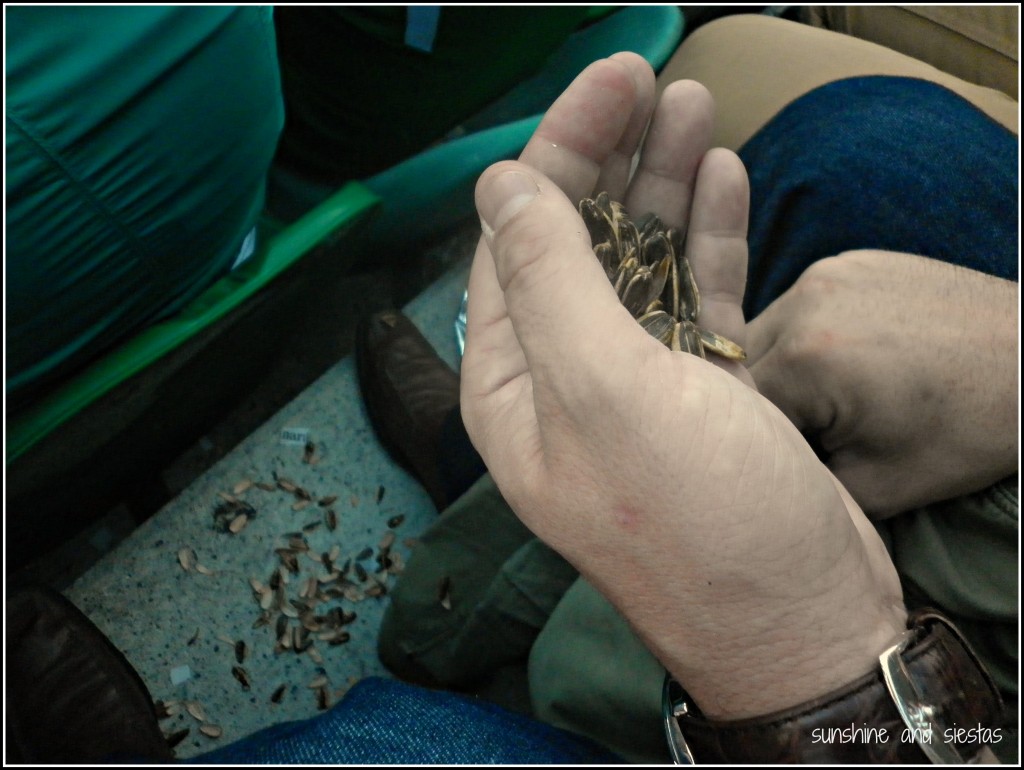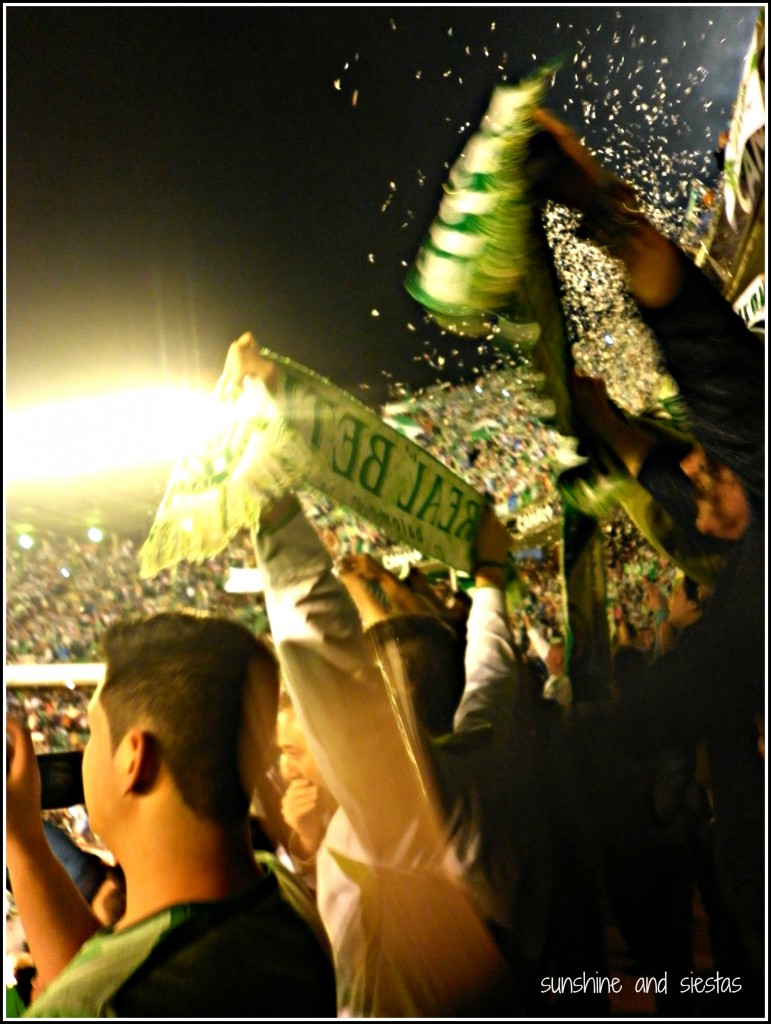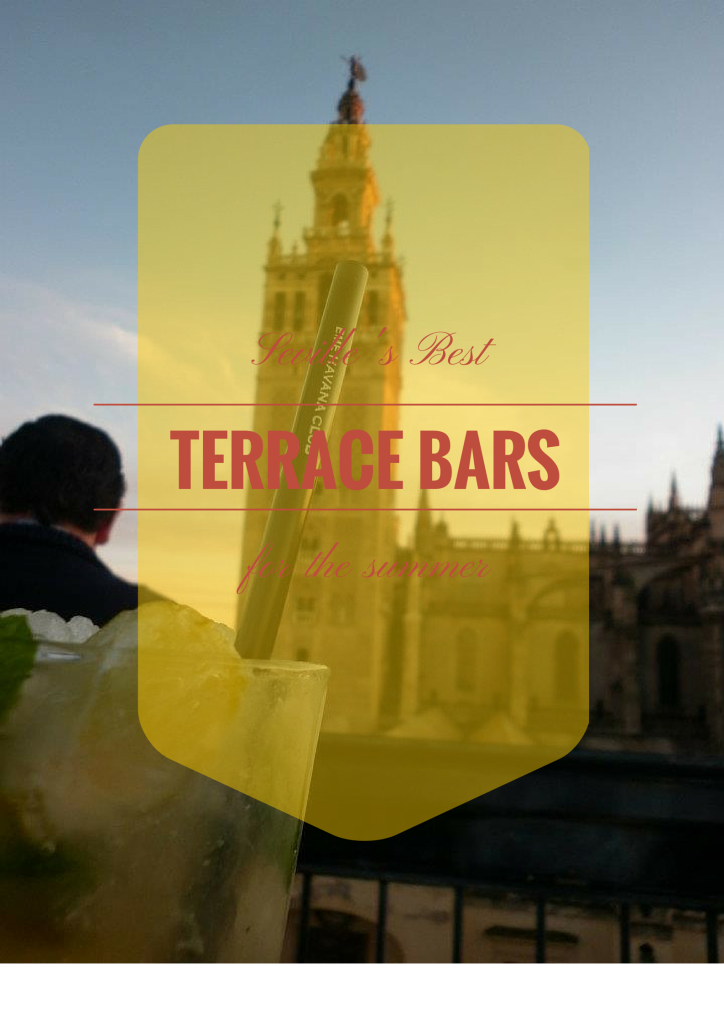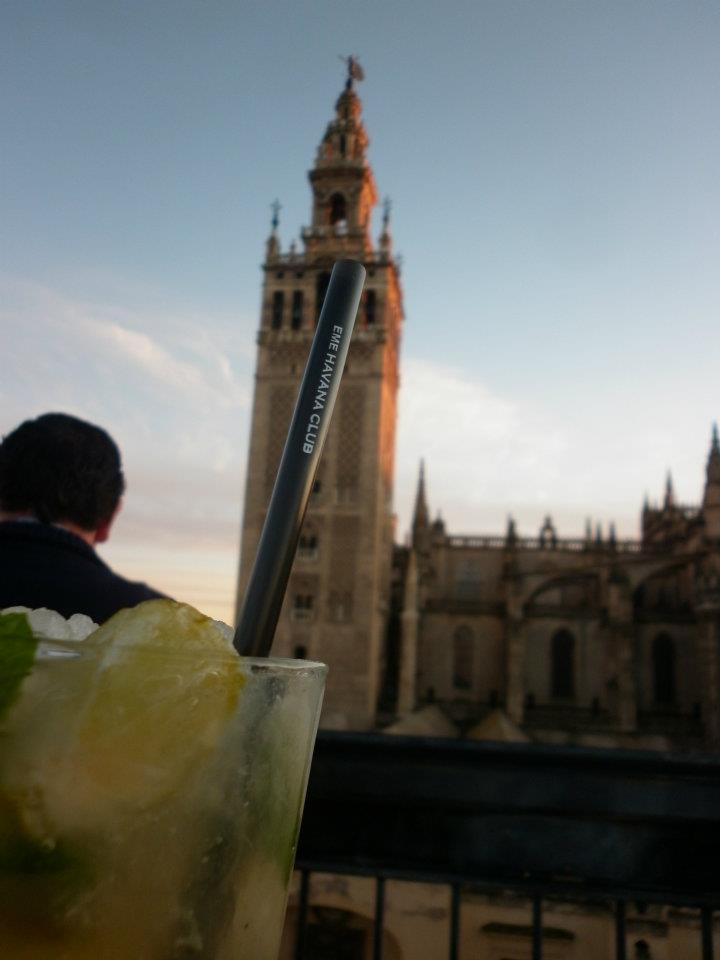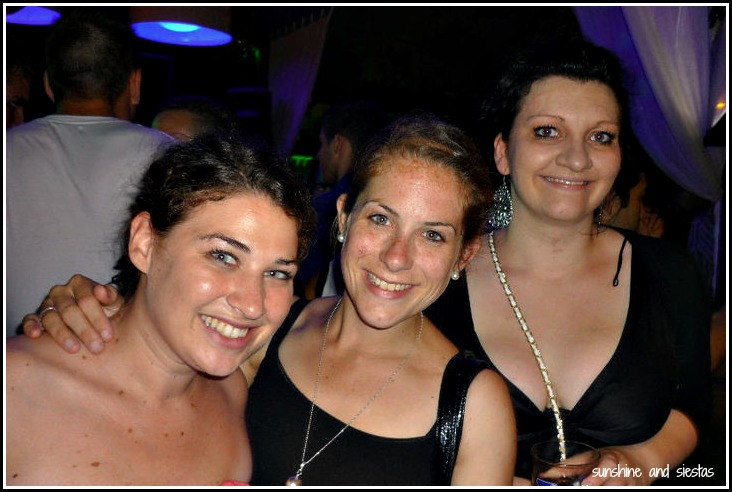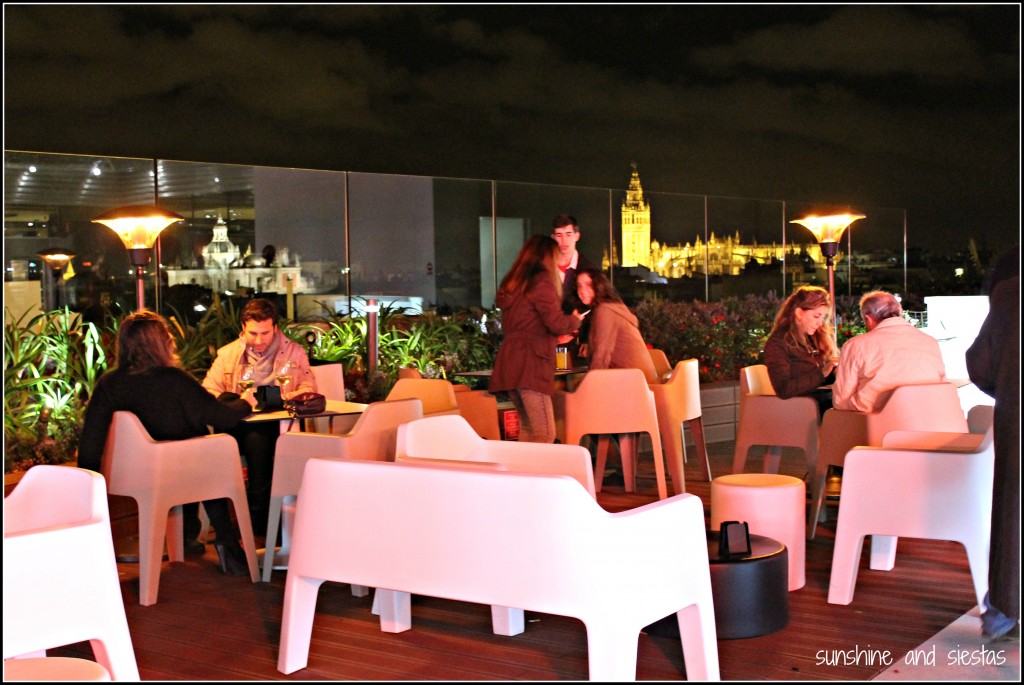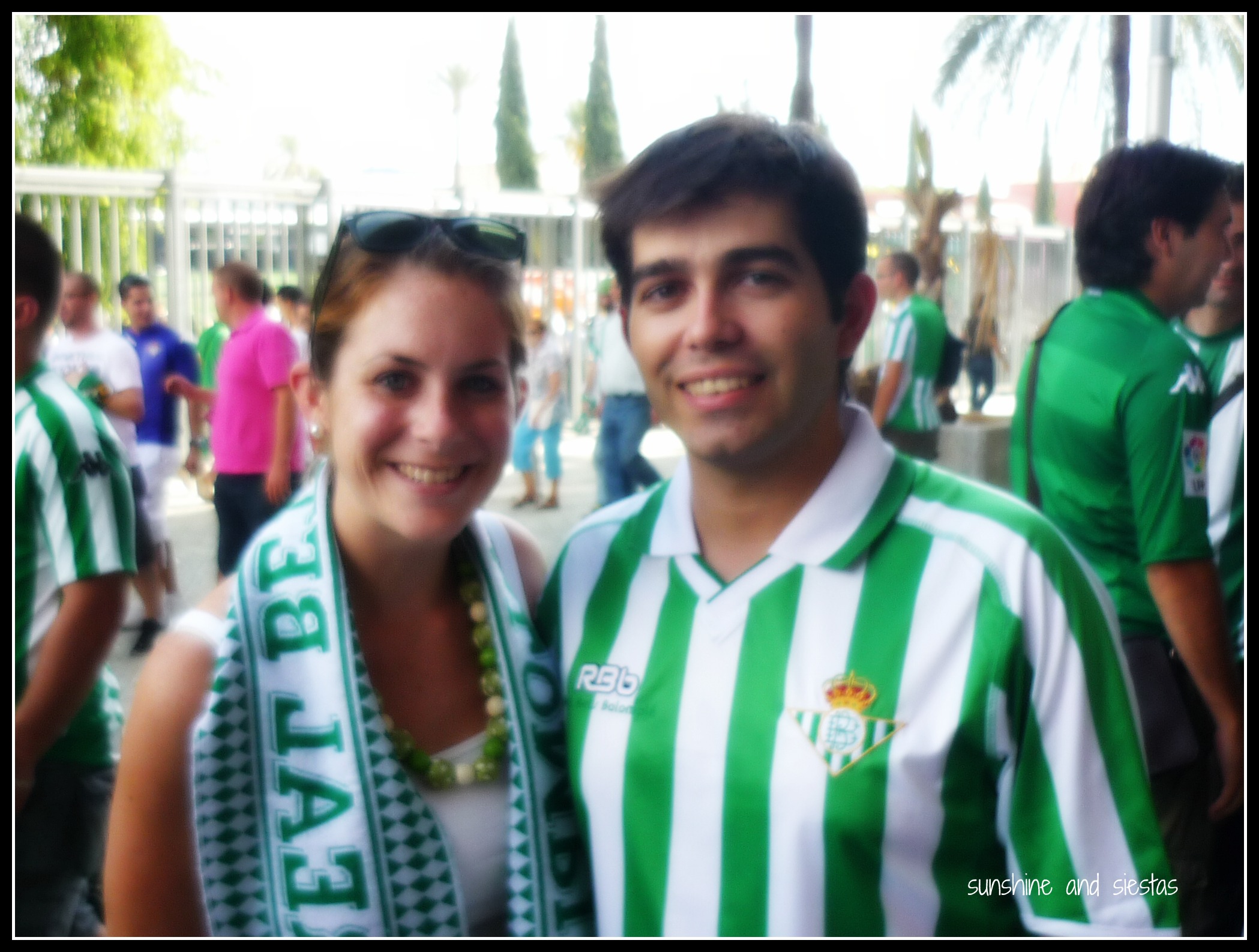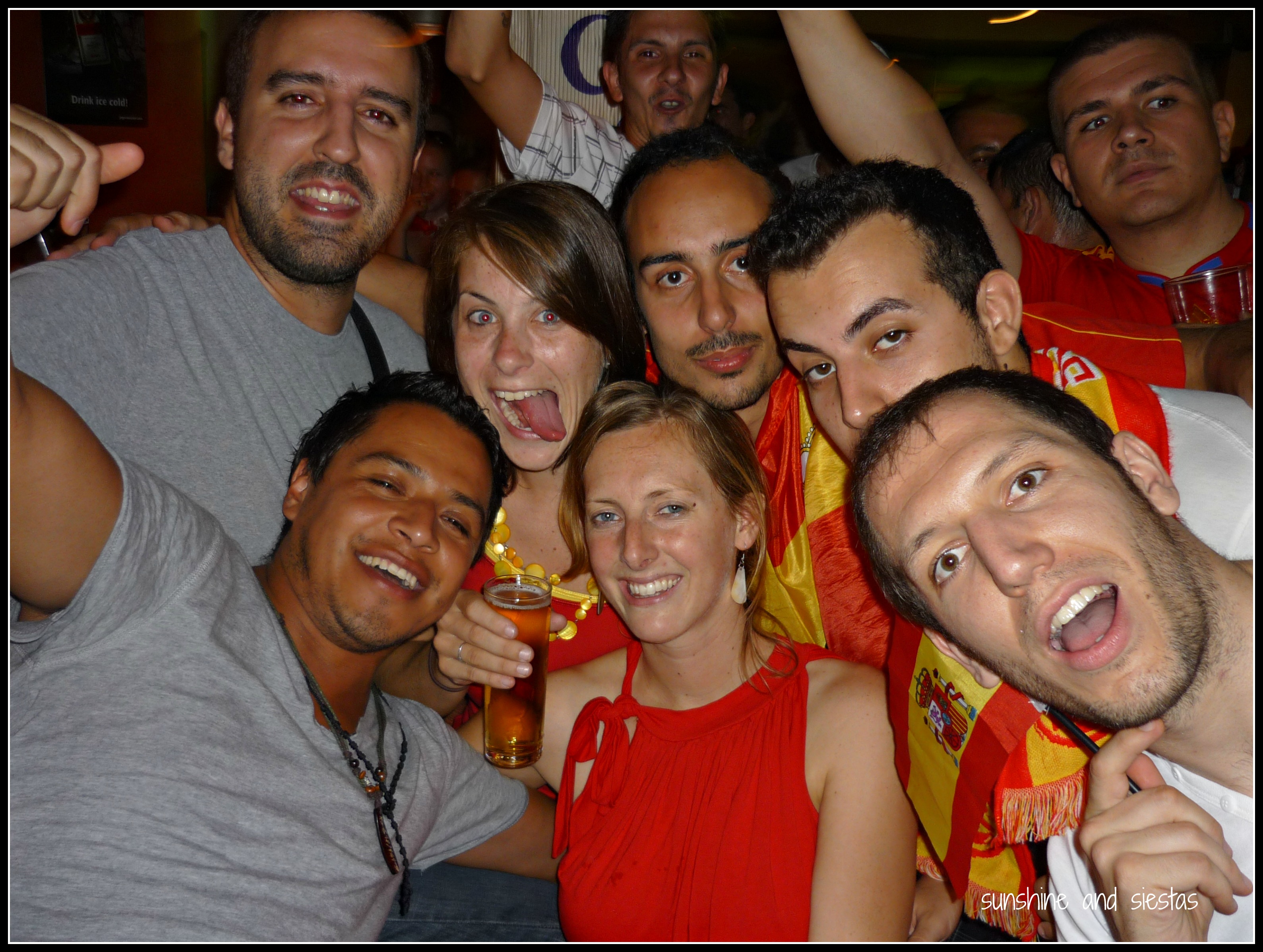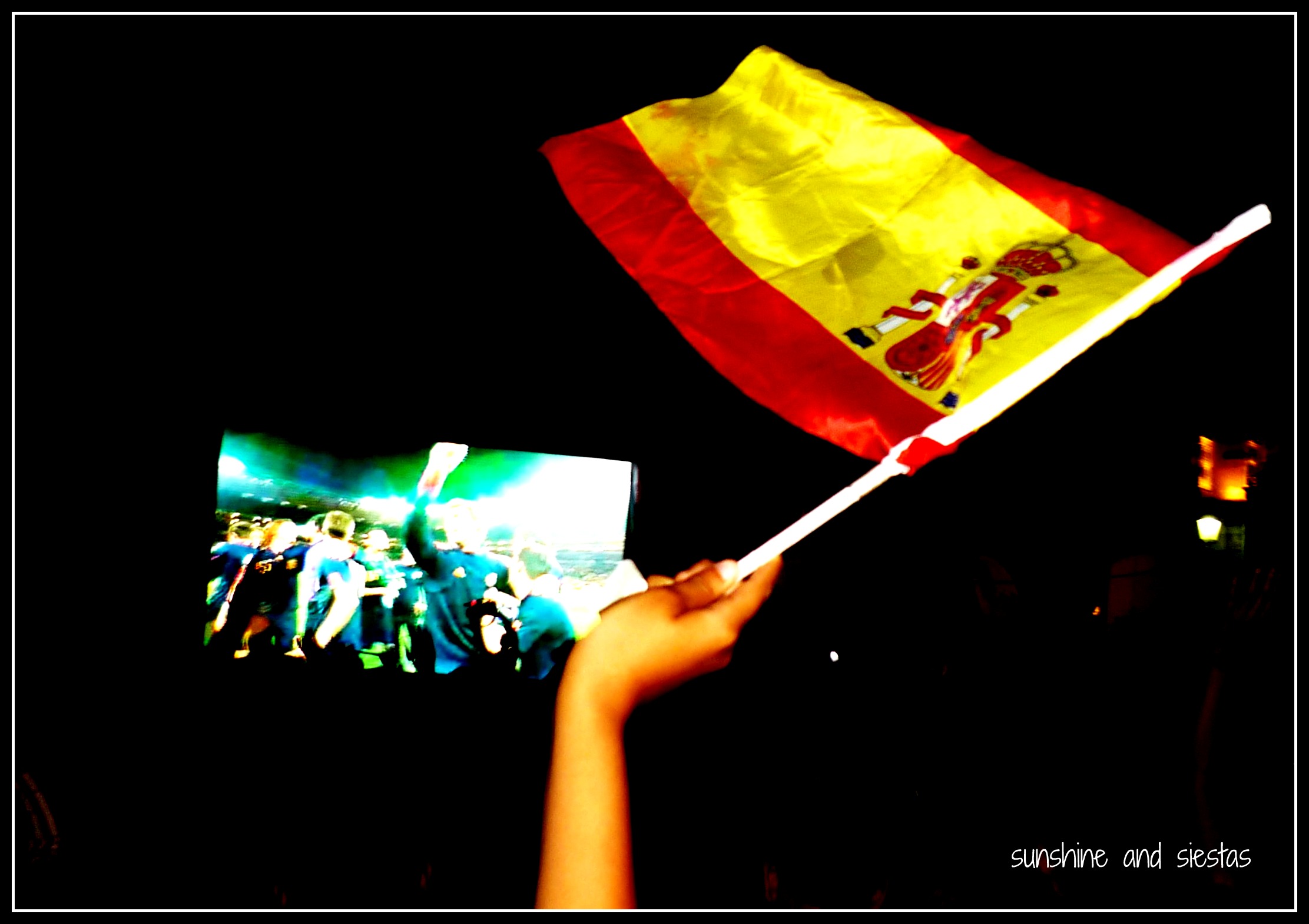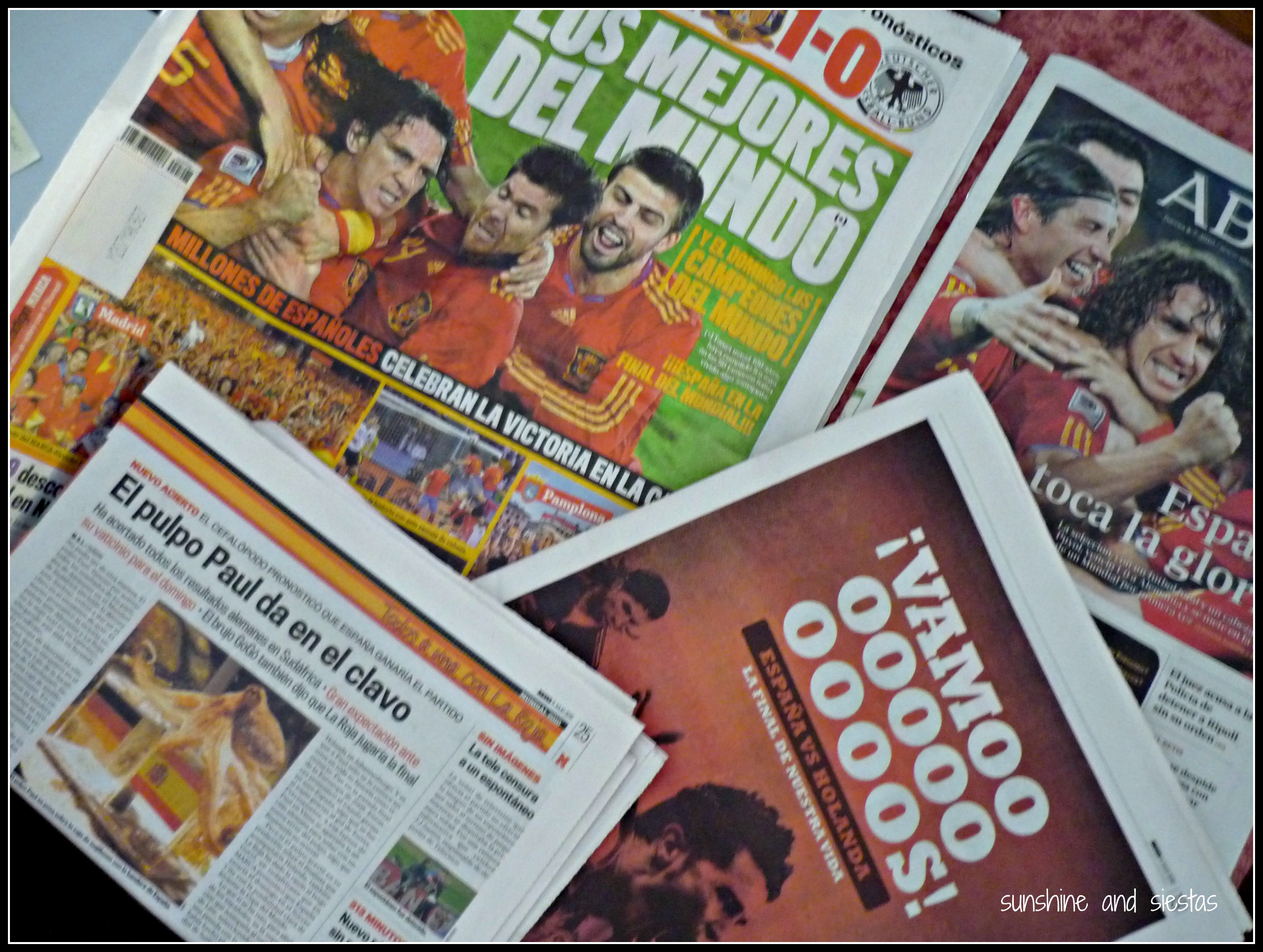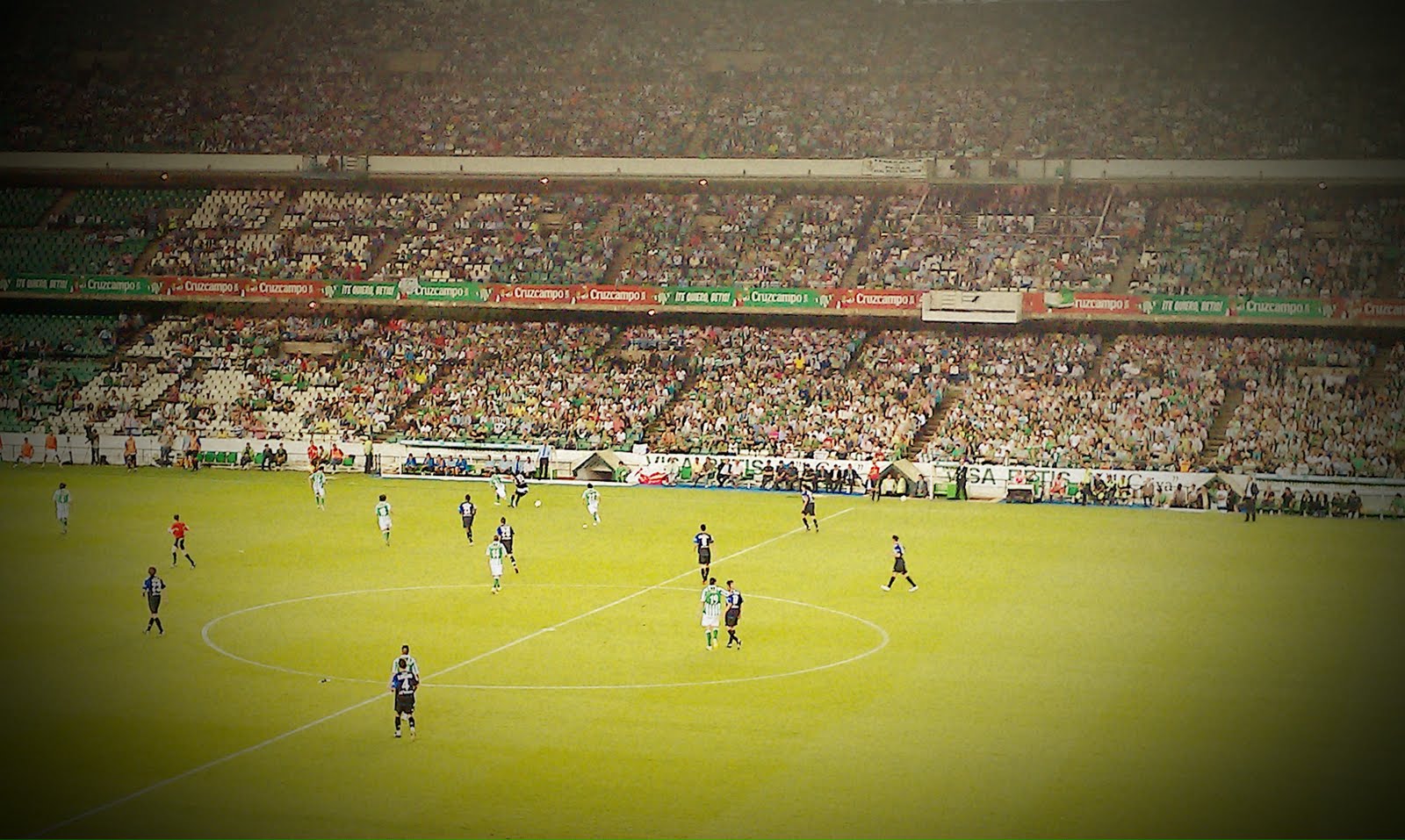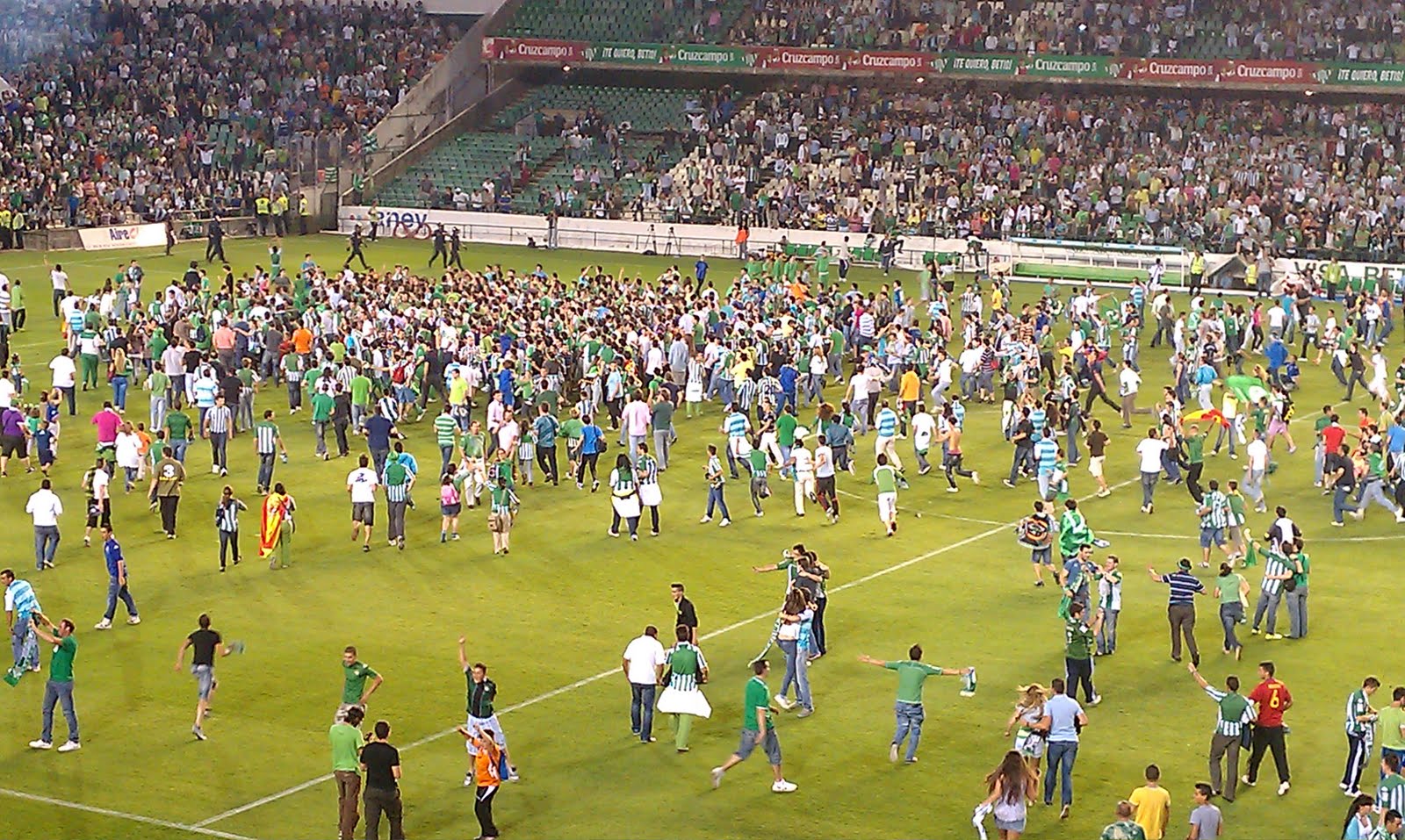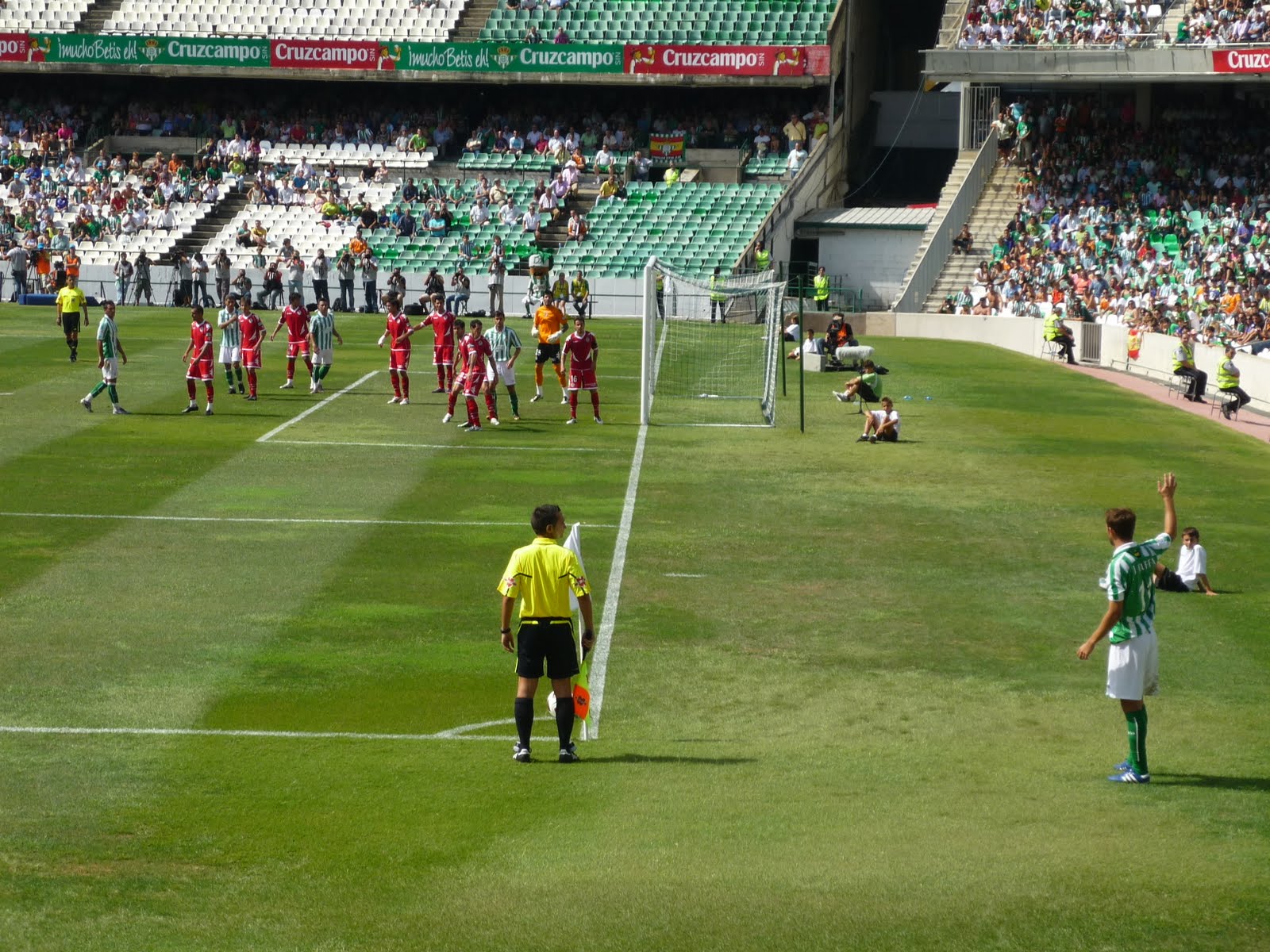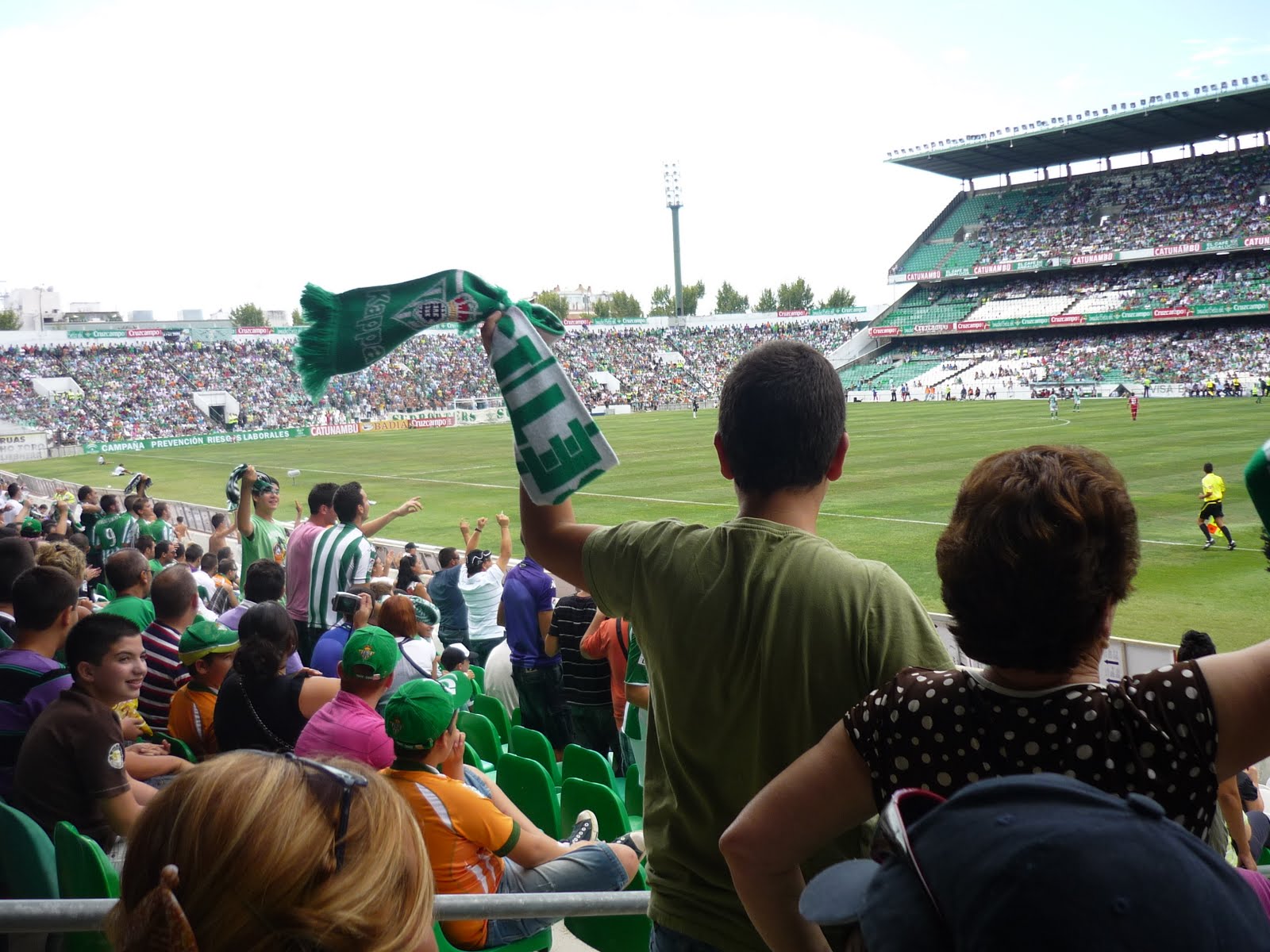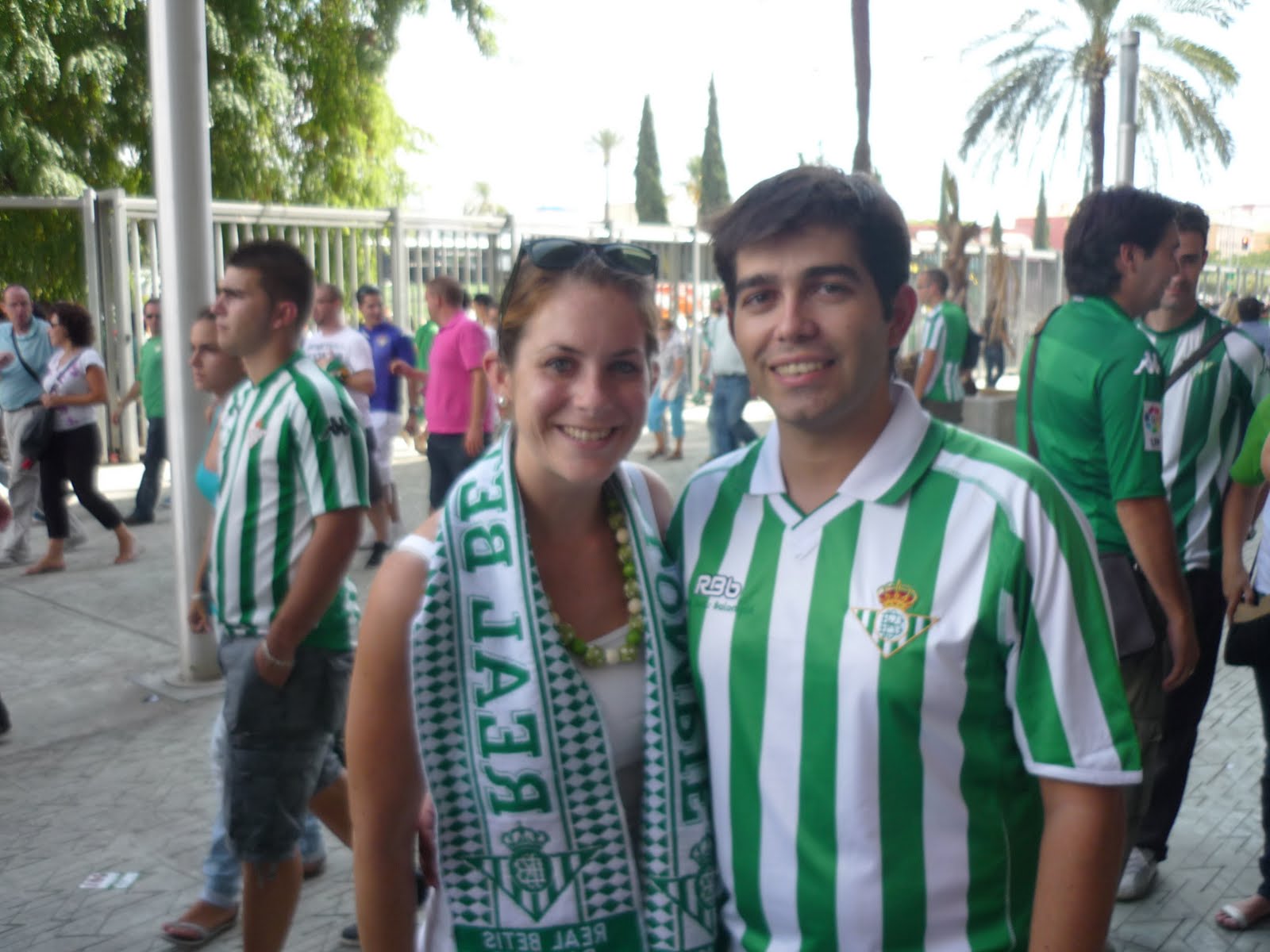To say that Betis has had a season to forget – plagued by injuries, three different coaches and bad luck with referees – is an understatement. Before the team even took the field at Estadio Benito Villamarín on Saturday, the 30,000 socios (me and the Novio included), had mathematical confirmation of a suspicion we’ve had since the end of the primera vuelta:
Un Betis en Segunda, relegated to the Liga Adelante four games before the end of the season.
As a first-time season ticket holder, I looked forward to every other Sunday in Gol Norte. Football became my new religion, bocadillos and sunflower seeds, my Sunday dinner, and I learned the words to the chants and hymn. After Betis’s miraculous 2012-13 season, one that saw them finish above Sevilla Fútbol Club and make it to the UEFA Euro League, it was a great moment to be bético.
But our hopes started to fade with the news of sales to make a quick buck and injuries from star players like Jorge Molina and Ruben Castro. Then came Pepe Mel’s firing – a move that polarized fans – and two more coaches who failed to save a flailing team. There were more jeers than cheers.
As we sat once more in Gol Norte on Saturday, I did my best to animar my team, perennial underdog in a city with two teams and two aficiones. The stadium was only half-full and sat in long periods of silence. Real Sociedad was playing for a spot in Europa and did us zero favors.
I’d say we left dejected after 93 minutes of hell, but we made the best of it, sharing snacks and joking about how next season will be different – we’ll probably win most games. I’ve come to see the people who sit around us as allies in a fight against the bad guys (the Dirección). And then there was the other guiri who did his darndest to rally the troops, dressed head-to-toe in green and white.
Despite the bad news, I’m still fiercely bética. As a matter of fact, I went to my first two Betis games when they were still in Segunda in 2010 and was immediately won over by the fan base, the electric feeling of being somewhere between heaven and hell when in the stadium.
Just as the Himno del Betis says, “Aunque última estuvieras simper te ven campeón.” What really makes Real Betis Balompié stand out from other teams in La Liga is its fan base, and I’m proud to have been to 15 home games and a UEFA playoff to cheer with 30,000 others.
Betis may be in Segunda, but in the words of coach Gabriel Calderón, su afición es de Primera.
Who do you think will join Betis in Segunda, and who will move up into Primera?
